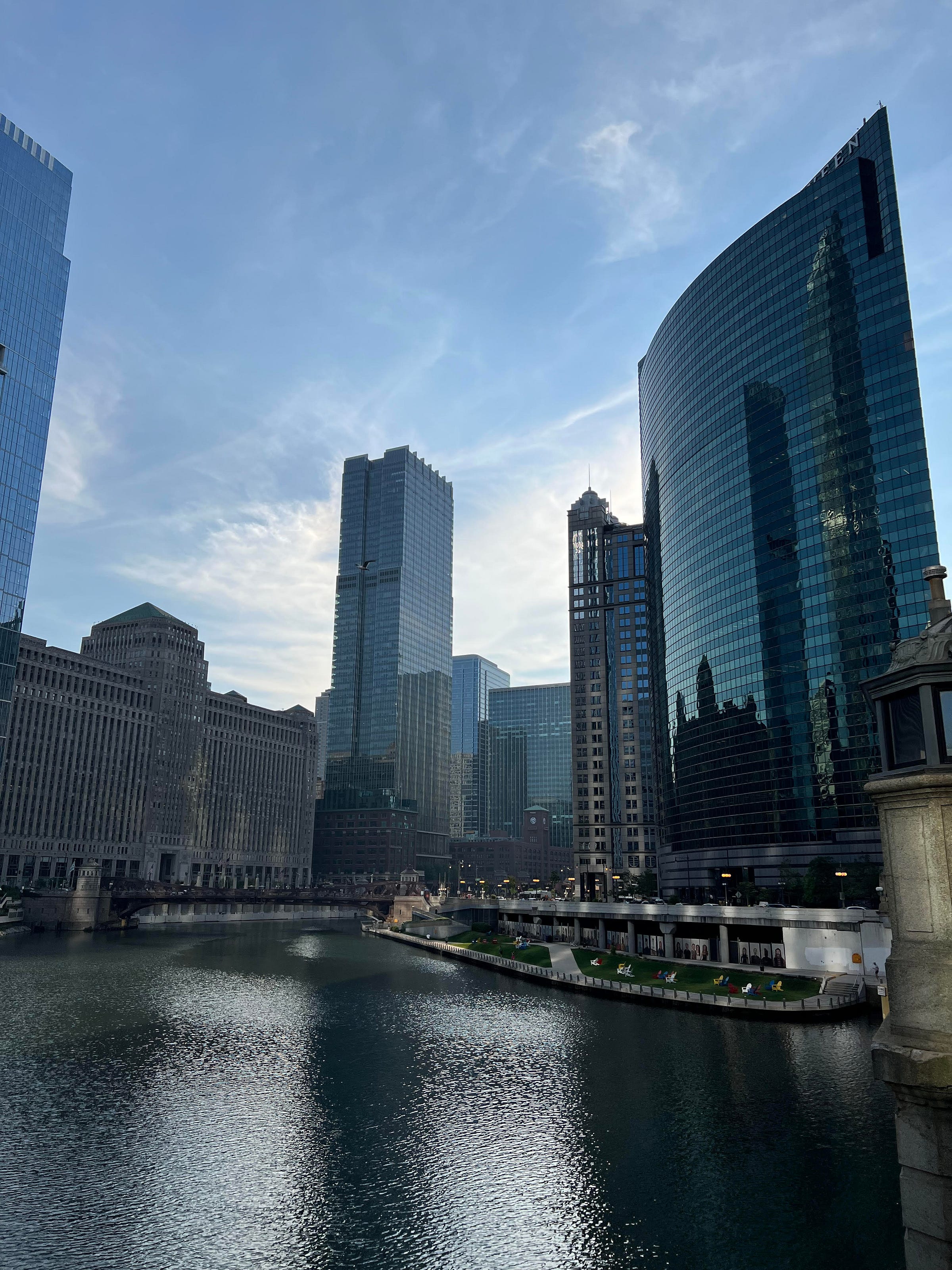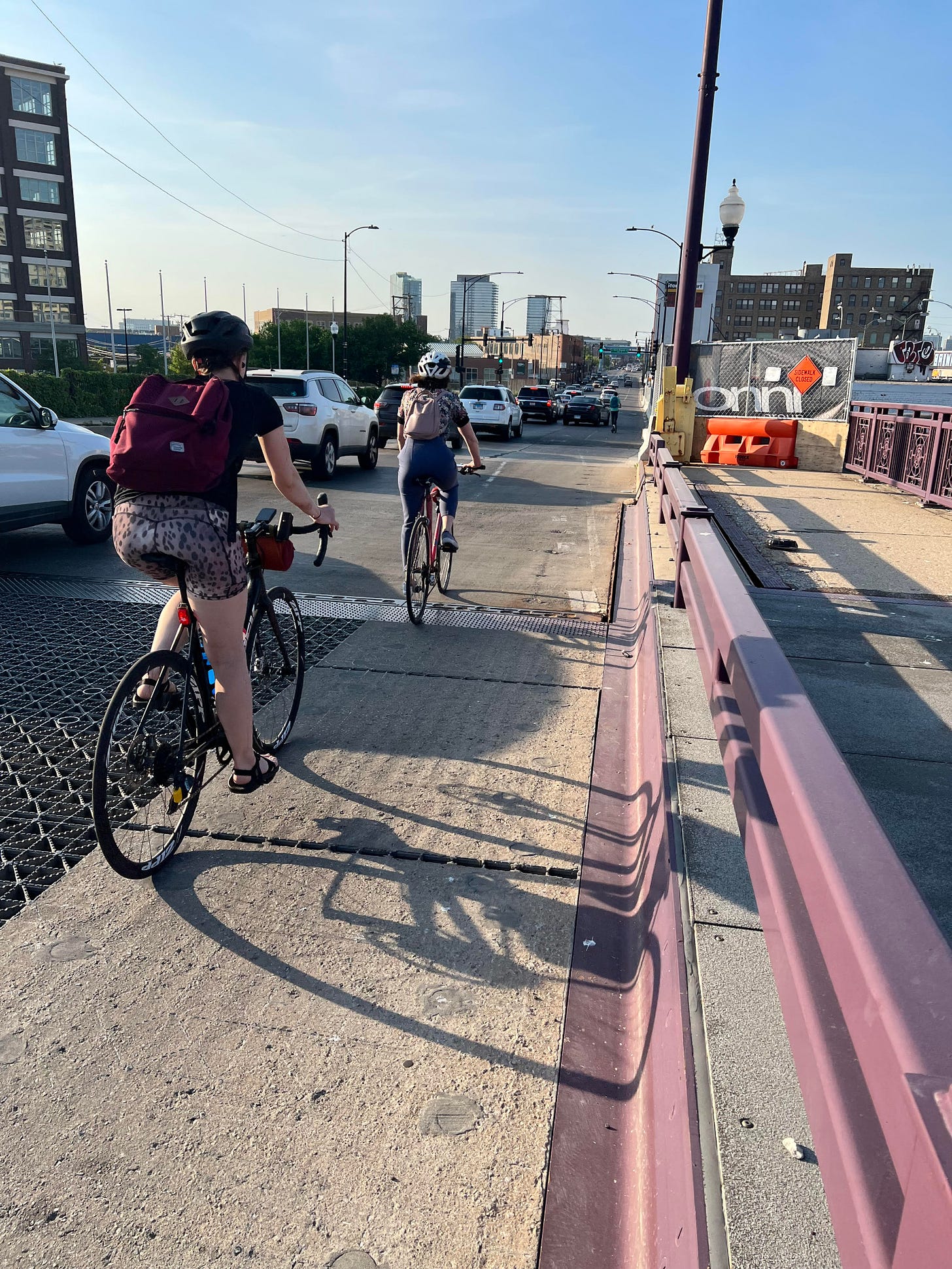Most of my posts here have been more structured, longer form “takes” on urbanism topics that I often spend quite a bit of time writing, editing and fidgeting with…and therefore not publishing. I’m generally pretty happy with the results, but the time consumption and everything else going on in my world means I haven’t really pushed out a lot of content. I know everyone is dying to hear more about how I hate cars!
So let’s get back to the blog roots with some reflections on my recent trip to Chicago last week. I only had about 36 hours but did have an open schedule so I got to spend a lot of it walking, biking and transiting around the second city. I’ve lived in the Chicago area (aka also Evanston) for several different stretches going back to 2003 so as this was my 20th anniversary of adopting it as my second home town, so it felt like a good time to reflect on its evolution.
My theme from the visit is - it’s time to let it rip Chicago. And by rip, I mean rip off the car culture from the streets.
I stayed in West Loop this time, a neighborhood that is rapidly transforming from a sleepy industrial node right under the nose of Chicago’s most developed neighborhoods, to a haute destination with the best food scene in the city, a plethora of new residential towers going up, and a new CTA infill station being constructed.
It was June, the weather was perfect, it was peak Chicago. It was the kind of Chicago that made me question what the hell am I doing living in Des Moines?
There were people everywhere on the streets. But despite this, despite the huge number of pedestrians, cyclists, and transit riders, it was still all cars all the time from an infrastructure perspective. I was surprised at how hostile the infrastructure was towards pedestrians and cyclists was considering 1) how major of a city Chicago is, and 2) how much of the population uses those forms of transportation.
But you can sense the potential, which is why it’s time for Chicago to unleash its true potential as a real city and get the cars off the streets. Much like New York, the potential value that could be unlocked by making much more of the city, especially core areas like West Loop, pedestrian focused is huge, and I think vastly outweighs the downsides of making it less accessible for drivers. Fulton Market is begging to be fully or partially pedestrianized, the placemaking it would unlock would be enormous.
I say this in contrast to here in Des Moines, where the tradeoffs aren’t so black and white. As much as I want to hate on cars and call for pedestrian zones and car restricted areas here, I have to acknowledge that 90+% of the population drives everywhere, and so restricting that can cause real economic pain. We don’t have the required population density or the transit infrastructure.
But not in Chicago, they’re ready to go, just do it Chi-Town! You see the potential in the number of people cycling and scootering around despite the dangerous roads with no dedicated infrastructure, and the number of “choice” riders on the Halsted bus I rode plodding north in traffic on a Thursday afternoon. This is all so different from 10 years ago when I lived in some of the neighborhoods not too far from West Loop. The number of non-drivers continue to grow, and so many of them are young, and even female despite there being very few safe routes!
It makes me optimistic that maybe as this next generation enters adulthood and begins to assume leadership that we can start pumping out some real investment in infrastructure for non-drivers and transit, the demand is there! Chicago has all the good bones for this, and while its definitely a city that has some serious issues to address, and I only experienced a small fraction of it on my visit, I think it’s also a city ready to shine from an urbanism perspective.
A thought I had while observing all this on my trip, optimistically again which is rare in my world, is that maybe we’ve reached peak car in America?
Now this is sort of also like saying from the bottom “well there’s only 1 way we can go from here?”, but it is a thought at least.
I found myself reading through this Forbes Car Ownership piece which has a lot of great data, most of which is not great. But if you look at the time period of 2017-2021 it overlaps with a period of time where car ownership became highly important for a very unique reason that will hopefully not become relevant again for a very long time. Yes car numbers are still going up, but if you look at that modest gain during a period of time when car ownership became a uniquely valuable thing for a short period of time, it wasn’t that big of a gain.
We’re now in 2023, 3 years since a global pandemic flipped everything we knew about urban living, and the vibrancy of being surrounded closely by people and economic activity, on its head. Our cities like Chicago have a lot of work to do: they need to build out safe infrastructure for pedestrians and cyclists, they need to reform their transportation networks to serve active lifestyles and not just commuters, and they need to continue to build density along all parts of their networks.
But 2023 represents the first full year where life in cities has truly returned to a new normal, and as we continue to incrementally make the infrastructure in our best cities better this way of life I think is ready to return to a new modern glory.
You’re ready to shine Chicago, just go ahead and return the streets back to your people.
If you’re interested in supporting urbanism in Chicago check out these links below




